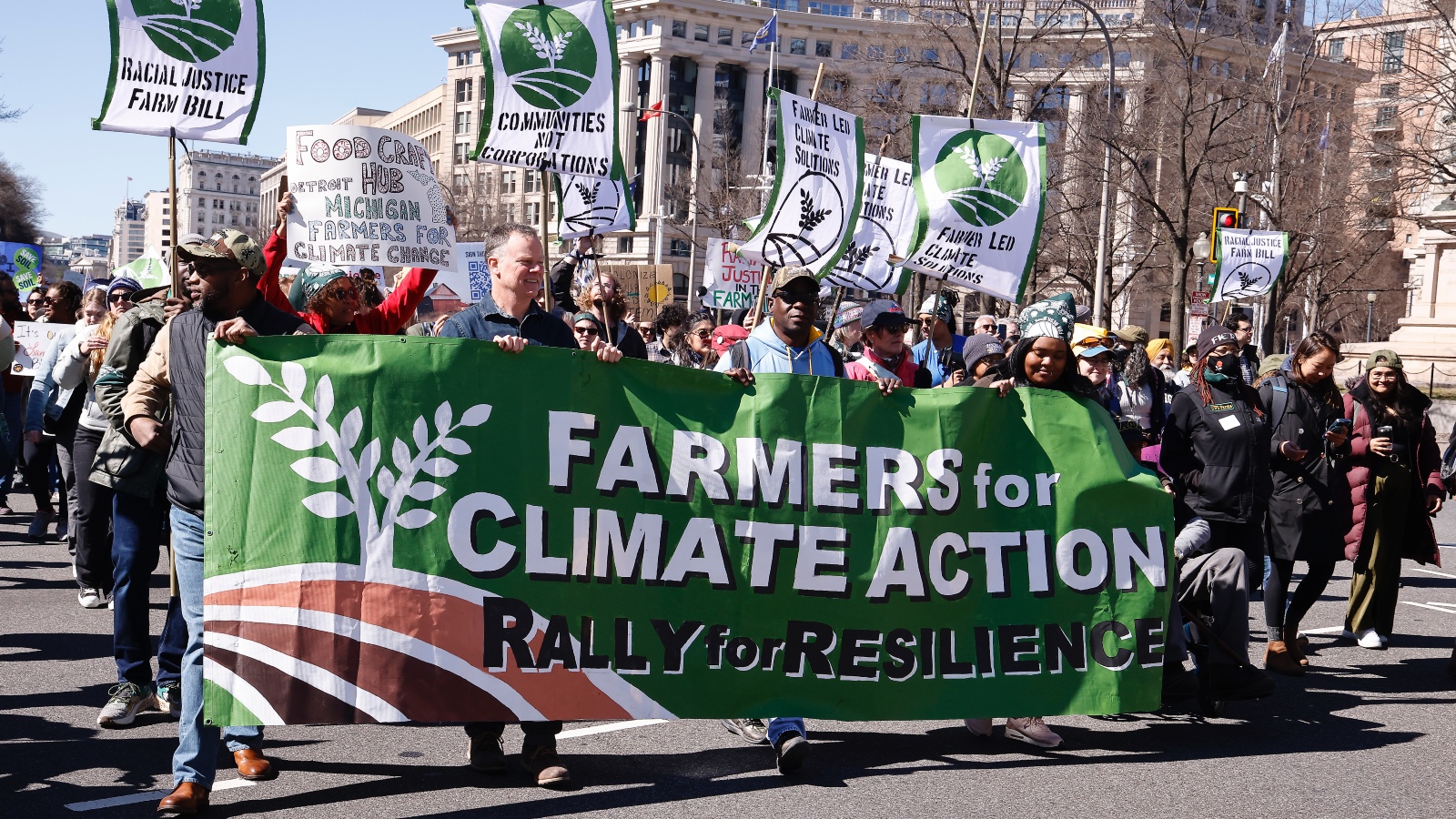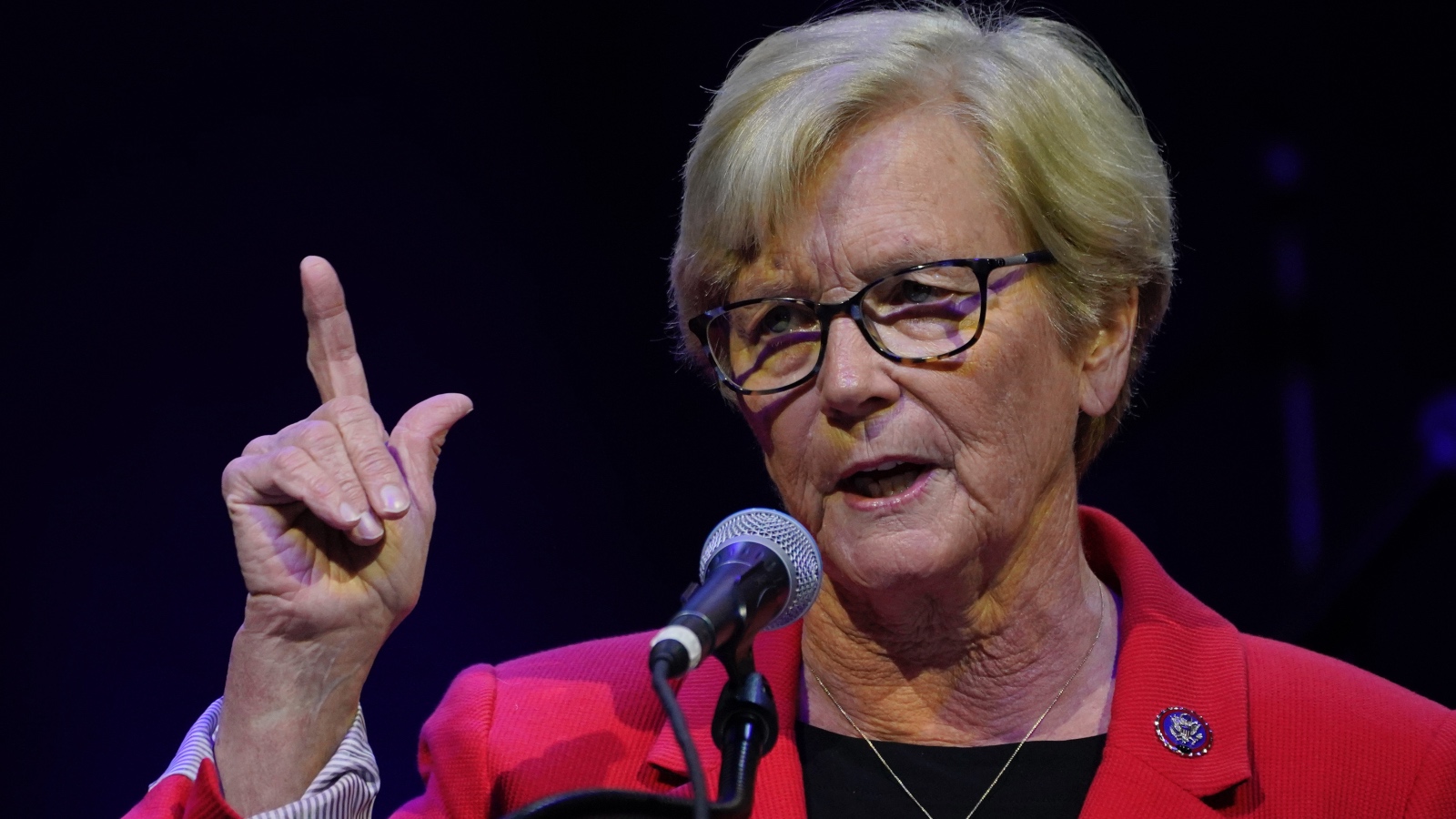When Congress renegotiates the farm bill every five years, it doesn’t exactly grab headlines. But this year, as the sweeping trillion-dollar legislative package that deals with everything from manure lagoons to food stamps comes up for renewal, climate advocates say it could be momentous.
Typically passed with bipartisan support, the legislation, projected to cost $1.4 trillion over 10 years, encompasses relatively mundane things like crop insurance and money for rural broadband. Nutrition programs alone usually claim three-quarters of the bill’s funding. But environmental groups and some farmer advocacy organizations are lobbying Congress to turn this year’s bill — due for an update by October — into the next historic climate law. They say it could curb warming caused by agriculture, a key emitter of greenhouse gasses, in large part by converting the country’s vast farmlands into fields that suck carbon out of the air.

But as farm bill negotiations get under way on Capitol Hill, climate-specific policy ideas — like subsidizing farmers who plant cover crops that store carbon — are emerging as a point of contention in a divided Congress.
“It’s still in the early stages,” said Representative Chellie Pingree, a Democrat from Maine who sits on the House Agriculture Committee. “I’m feeling less discouraged than I could be,” she added, noting a history of broad support for farm bill programs that benefit both farmers and climate — say, by promoting soil health or making farms more resilient to drought — even if they don’t explicitly target emissions.
As climate advocates prod lawmakers to tamp down on farm-related greenhouse gas emissions, new research shows food production alone is on track to warm the planet 1 degree Celsius (1.8 degrees Fahrenheit) by the end of the century. In the United States, agriculture accounts for more than a 10th of the country’s emissions but could produce as much as a third by 2050, according to a recent Environmental Working Group analysis. But the soil beneath the country’s corn, soybeans, other crops, and pastures is capable of storing enough carbon to offset emissions by up to 10 percent.
The farm bill could transform U.S. agriculture into a climate solution, said Cathy Day, climate policy coordinator at the National Sustainable Agriculture Coalition. Her organization is pushing Congress to boost funds for already existing conservation programs that help farmers plant trees and cover crops, reduce use of fertilizers that emit nitrous oxide, a potent greenhouse gas, and shift to grazing systems that keep soil intact, among other practices that cut emissions directly or lock carbon in the ground. Day also wants to see lawmakers invest in research and technology to help growers monitor how much carbon they sequester on their lands — a key metric for understanding how effective farms are at combating climate change.
Congress allocated $20 billion for the U.S. Department of Agriculture’s conservation programs under the Inflation Reduction Act, the landmark bill that President Joe Biden signed last year. According to Day and other climate advocates, that wasn’t enough. While the bill made slashing emissions an explicit part of a few USDA programs, the funding will last only 10 years, Day said. “If we want to see that kind of funding go forward, we need to make [similar] funding permanent rather than have it a one-off situation.”
Key farm bill programs that the IRA promised to infuse with cash — the Conservation Stewardship Program and Environmental Quality Incentives Program — are notoriously oversubscribed. About three-quarters of farmers who apply for those programs don’t get funded, according to a recent report by the Institute for Agriculture and Trade Policy. That analysis, though, focused on data from before the IRA went into effect, and the billions of dollars authorized by the bill will help cover the backlog, said Michael Happ, program associate for climate and rural communities at the institute.
Still, that money will do little more than make up for cuts — including those to the Conservation Stewardship Program — in the past two farm bills, according to Day. Groups like the National Sustainable Agriculture Coalition and even the more conventional American Farm Bureau Federation want to see Congress spend more on the conservation programs and target emissions. In recent years, those programs have shied away from funding “climate-smart” agriculture, according to an Environmental Working Group analysis published last year. Currently, half of the farm bill-authorized funds for the Environmental Quality Incentives Program, which shares costs for conservation-minded farm projects, goes to farmers’ livestock needs. That includes bankrolling methane digesters — systems usually made up of sealed tanks or ponds — that some farms use to convert methane from manure into fuel, called biogas, and fertilizer.
“On the surface, that absolutely reduces the magnitude of greenhouse gas emissions,” Day said. “However, those methane digesters also support an existing agricultural system that is built around high fossil-fuel use.” Digesters are often, though not always, used at Concentrated Animal Feeding Operations, sometimes called CAFOs, industrial livestock pens that are a major source of methane emissions. Rather than propping those facilities up, Day said the farm bill should subsidize practices like perennial grazing and agroforestry, which involves diversifying farmland with trees and shrubs that limit soil erosion, create wildlife habitat, and store carbon. Day said she’s not sure yet if such proposals will see bipartisan support but that incentive-based policies stand a better chance than mandates.

Even if the farm bill boosts “climate-smart” farming by the billions, that alone won’t solve a major problem: Most growers don’t have the tools to know how much carbon they’re storing in their soil, said Cristel Zoebisch, deputy director of policy at Carbon180, a nonprofit focused on carbon removal and storage. “We need to be fairly certain that the amount of CO2 we’re saying we’re offsetting is actually being sequestered in agricultural lands,” Zoebisch said. “We don’t really have a good sense of what the baseline, what the starting point of soil carbon stocks looks like across the country today.”
Zoebisch wants to see the farm bill fix that by directing money toward research, local demonstration trials and the development of equipment farmers could use to measure the carbon they sequester. While Congress recently passed the bipartisan Growing Climate Solutions Act to help farmers access carbon markets — where they could profit from the carbon stored on their land — the bill didn’t resolve uncertainty around how to measure soil carbon or if the markets are worth it financially for farmers.
And while that act showed bipartisan interest in voluntary farm programs that could curb emissions, a Republican-led House and a narrow Democratic majority in the Senate could stand in the way of more stringent regulations, like Senator Cory Booker’s proposal to ban CAFOs. Representative Glenn Thompson, a Republican from Pennsylvania who chairs the House Agriculture Committee, said last year he wants to “make sure the farm bill doesn’t become the next climate bill.” And Senator John Boozman, a senior Republican on the Senate Agriculture, Nutrition, and Forestry Committee, raised concerns at a committee hearing earlier this month about the climate-specific agriculture funding earmarked in the IRA, which Republicans unanimously opposed. But Republican leaders, including Thompson and Boozman, also have intimated they could be open to climate-beneficial programs with limitations.
Success in getting Republicans on board might hinge on how programs are framed. For example, lawmakers from both parties have signaled support for voluntary programs that assist farmers in planting cover crops, while some Republicans have pushed back against requiring growers to engage in climate-friendly practices to get subsidies for crop insurance. “There is a lot of potential for climate targeting — without calling it climate,” Day said.
On Tuesday, Pingree and Senator Martin Heinrich, a Democrat from New Mexico, reintroduced the Agriculture Resilience Act, an ambitious marker bill that aims to make agricultural emissions net-zero by 2040. Pingree told Grist it could be hard to get a Republican cosponsor on her bill, but she expects the farm bill alone to help lower emissions, even if implicitly, through established programs that strengthen local food systems and improve soil health. That includes the USDA conservation programs and, among others, the Local Agriculture Market Program, which funds farmers markets.
“Unless it was gutted and destroyed, the farm bill will be a climate package,” Pingree said. “Optimism might be a little too strong of a word, but I’m keeping an open mind that this process could work.”



